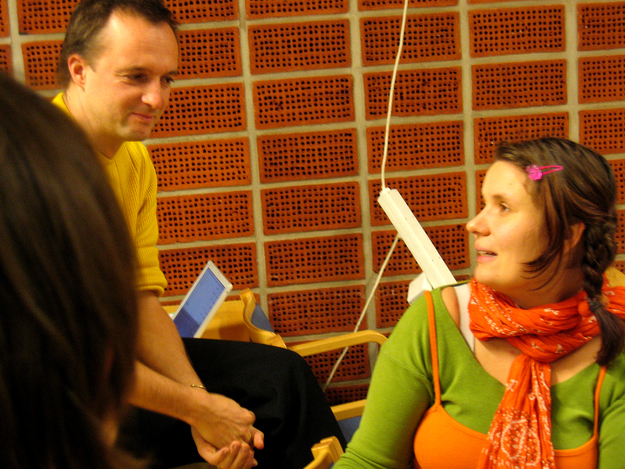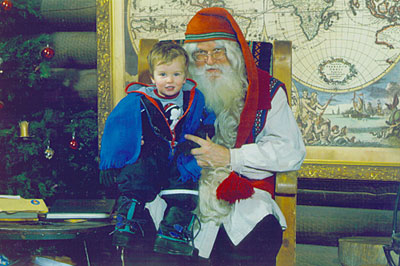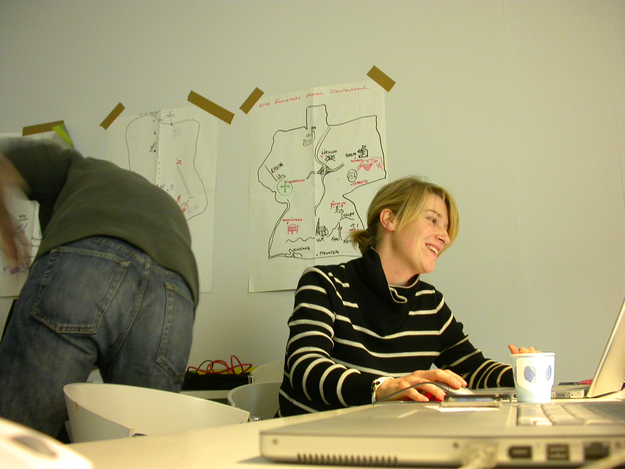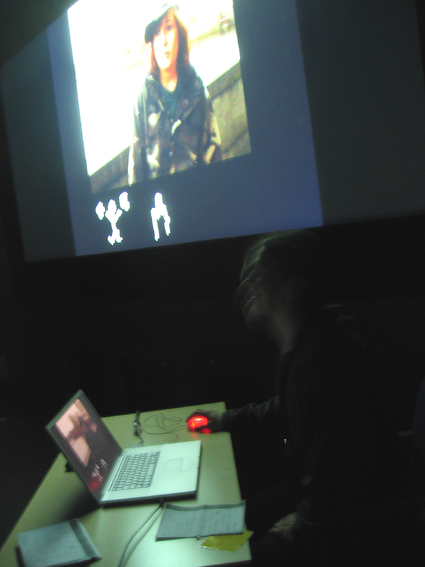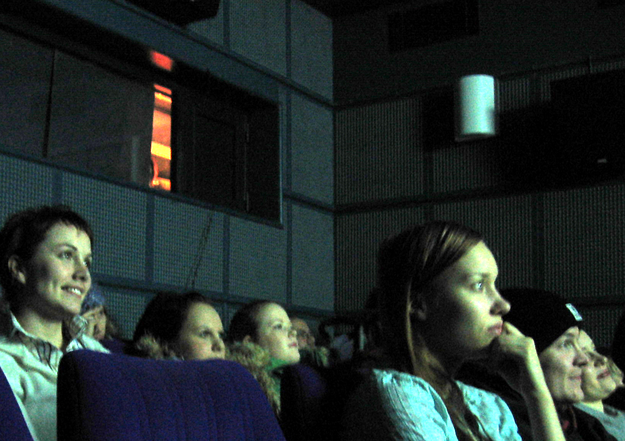In five days of workshop, the possibilities of interactive storytelling for children will be explored by the participants, while guided by experienced trainers. Each participant will also design and build an interactive project based on his own material or ideas, using the Korsakow system as a software tool. On the 6th day the results of the project will be presented.
Participants can bring at maximum 40 minutes of material to make a workshop project from. It is also possible (to a limited extent) to shoot material during the workshop. If you don't have material to work with or would rather work with fresh material, you can use material provided by us.
The results of Korsakow projects can be published on CDrom, DVDrom or the Internet.
No specific technical knowledge is required to be able to use the software. During the workshop technical and conceptual assistance is constantly available.
When, where, costs and other requirements
November 12th - 16th, 10.00 am - 17.00, classroom HU 205 of the University of Oulu.
Final presentation: November 17th, 15.00 hrs at the Youth and Culture Centre NUKU in Oulu.
This workshop is made possible with the support of the MEDIA PLUS PROGRAMME of the European Community and OCW
Workshop Report
The Korsakow Workshop at the International Childrens' Film Festival in Oulu started out very ambitiously: participants brought material especially shot with a non-linear approach in mind and we were prepared to work until far after sunset each day (which is around 3 PM in Finland at this time of the year).
Even though all participants were grown-ups, the workshop was all about kids: Kids were the target audience of the projects to be developed, kids were starring almost all of the projects and, last but not least, kids were all over the workshop space.
The initial introduction to the concept of interactivity in storytelling was also paying its dues to the implications of the target audience's young age.
Storytelling for children can be seen as the ideal case to apply interactive concepts. Children very much demand interactivity and the ability of the storyteller to read their reactions properly and react in an adequate way. They naturally turn the reading of a book into their personal interactive experience – which may result in the story taking a completely different path than the one written down in the book. For educational purposes, schools have been applying and favoring interactive models for a long time now.
At the same time, it is a very challenging task: Whether the story is educational or purely entertaining (most of the projects developed during the workshop were somewhere in between), even if it develops more into a game, it is crucial to establish a clear, intuitive and consistent interaction model right from the beginning. There is not much tolerance to be expected for complicated explanations or "lengths" (single rather boring parts within an interesting project).
The discussions about this issue and the thereby initiated experiments established a very open and fertile atmosphere. A new theory on the sensual aspects of an interactive piece marked the highlight of this process: The dramaturgy of an interactive narration is not merely defined by the form of freedom the user has, but very much by the aspects of rhythm and kinetics. To put it in simple terms: How is the initiative balanced between the audience and the interactive project – or: do I (the user) keep it moving or do I have to make it move?
Despite all exciting theories, the focus of this workshop was clearly practical. After hands-on training in the Korsakow System – supervised by Florian Thalhofer, creator of the software, as well as six Trainer-Assistants from the University of the Arts in Berlin – the participants did not waste time to start applying their discoveries on their own material.
The results made it really hard to choose for the final presentation. In the end, five instead of usually three projects were presented to the audience in the packed cinema. Hilkka Kauhanen showed her witty babysitter-training-tool 'Feeding Lila'. Another project on how-to-deal-with-that-little-brother was presented by the complete family production team. Janne Kaakinen and Katri Laiho both aimed at youngsters rather than children with a story about teenage gangs and street dancing. Although they were using the same footage, the projects turned out completely different: while Janne produced a very charming educational narration, Katri Laiho came up with a completely non-narrative music- and video-mixing tool.
Markku Kauranen's Nursery Rhyme was clearly outstanding in the way that it was not at all about fun, but in a very sensitive, meditative way tried to raise awareness for the issue of child labour.
It's dawn eventually. After five highly intensive "days" – or rather nights – back in Berlin, Amsterdam and Barcelona. The ongoing correspondence between participants, organizers of the festival and Mediamatic staff suggests that this first involvement in children's filmmaking will certainly not be the last. Hopefully so, since trainers made at least as much discoveries during this process as participants did and the pleasure in doing this workshop was at least mutual.
